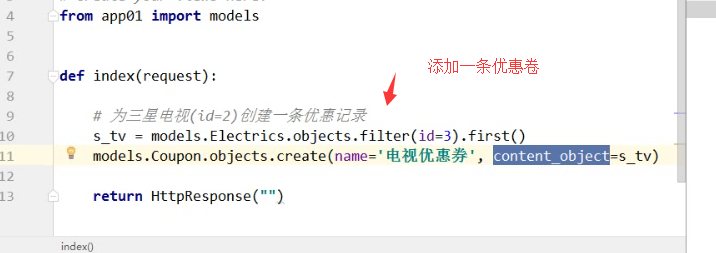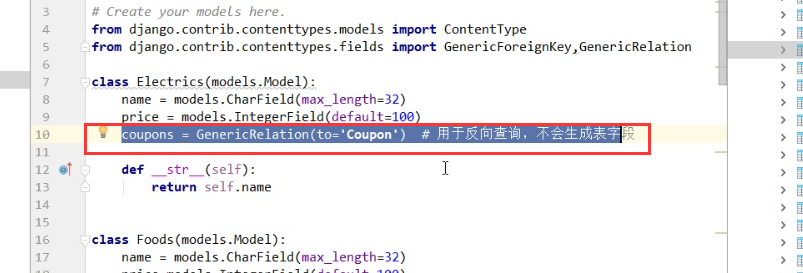一、 什么是跨站请求伪造 CSRF
def transfer(request):
if request.method =='POST':
from_ =request.POST.get('from')
to_ =request.POST.get('to')
money =request.POST.get('money')
print('{} 给{} 转了{} 钱'.format(from_,to_,money))
return HttpResponse('转账成功!')
return render(request, 'transfer.html')
<!DOCTYPE html> <html lang="en"> <head> <meta charset="UTF-8"> <title>Title</title> </head> <body> <h1>正经的网站</h1> <form action="/transfer/" method="post"> {% csrf_token %} <p> 转出: <input type="text" name="from"> </p> <p> 转入: <input type="text" name="to"> </p> <p> 金额: <input type="text" name="money"> </p> <p> <input type="submit" value="提交"> </p> </form> </body> </html>


Django中内置了一个专门的处理csrf问题的中间件
django.middleware.csrf.csrfviewmiddleware
这个中间件做的事情:
1. 在rander返回页面的时候,在页面中塞了一个隐藏的input标签
我们在form 表单里写上 {%csrf -token%}
2. 在提交post数据的时候,它帮你做校验,如果校验不通过,就拒绝这次请求


二、ContentType
https://blog.csdn.net/ayhan_huang/article/details/78626957
Django contenttypes 应用
contenttypes 是Django内置的一个应用,可以追踪项目中所有app和model的对应关系,并记录在ContentType表中。
每当我们创建了新的model并执行数据库迁移后,ContentType表中就会自动新增一条记录。比如我在应用app01的models.py中创建表class Electrics(models.Model): pass。从数据库查看ContentType表,
那么这个表有什么作用呢?这里提供一个场景,网上商城购物时,会有各种各样的优惠券,比如通用优惠券,满减券,或者是仅限特定品类的优惠券。在数据库中,可以通过外键将优惠券和不同品类的商品表关联起来:
from django.db import models class Electrics(models.Model): """ id name 1 日立冰箱 2 三星电视 3 小天鹅洗衣机 """ name = models.CharField(max_length=32) class Foods(models.Model): """ id name 1 面包 2 烤鸭 """ name = models.CharField(max_length=32) class Clothes(models.Model): name = models.CharField(max_length=32) class Coupon(models.Model): """ id name Electrics Foods Clothes more... 1 通用优惠券 null null null 2 冰箱满减券 2 null null 3 面包狂欢节 null 1 null """ name = models.CharField(max_length=32) electric_obj = models.ForeignKey(to='Electrics', null=True) food_obj = models.ForeignKey(to='Foods', null=True) cloth_obj = models.ForeignKey(to='Clothes', null=True)
通过使用contenttypes 应用中提供的特殊字段GenericForeignKey,我们可以很好的解决这个问题。只需要以下三步:
- 在model中定义ForeignKey字段,并关联到ContentType表。通常这个字段命名为“content_type”
- 在model中定义PositiveIntegerField字段,用来存储关联表中的主键。通常这个字段命名为“object_id”
- 在model中定义GenericForeignKey字段,传入上述两个字段的名字。
为了更方便查询商品的优惠券,我们还可以在商品类中通过GenericRelation字段定义反向关系。
示例代码:
from django.db import models from django.contrib.contenttypes.models import ContentType from django.contrib.contenttypes.fields import GenericForeignKey class Electrics(models.Model): name = models.CharField(max_length=32) coupons = GenericRelation(to='Coupon') # 用于反向查询,不会生成表字段 def __str__(self): return self.name class Foods(models.Model): name = models.CharField(max_length=32) coupons = GenericRelation(to='Coupon') def __str__(self): return self.name class Clothes(models.Model): name = models.CharField(max_length=32) coupons = GenericRelation(to='Coupon') def __str__(self): return self.name class Coupon(models.Model): name = models.CharField(max_length=32)
#以下三部骤 content_type = models.ForeignKey(to=ContentType) # step 1 object_id = models.PositiveIntegerField() # step 2 content_object = GenericForeignKey('content_type', 'object_id') # step 3 def __str__(self): return self.name


1. 正向操作 ( object.content_type 即跨到另一张表上)




2. 反向查询




